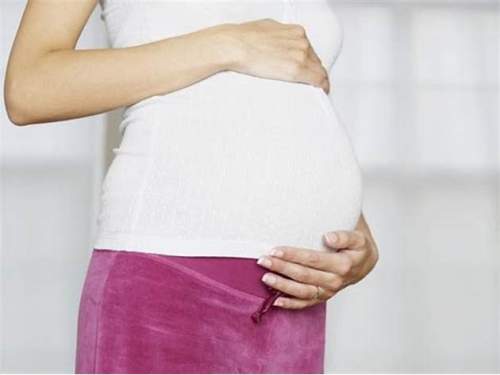
Uterine Polyps and Infertility: What You Need to Know
When it comes to infertility, the causes are often a complex web of factors. Sometimes, it’s an issue with egg quality or sperm count, other times it’s something more elusive, like uterine polyps. As a fertility specialist, I’ve seen many patients who struggle with this condition, often without even knowing they have it.
In one of my earliest experiences dealing with uterine polyps, I worked with a patient named Rachel. She was in her early 30s, had been trying to conceive for over a year, and had no major medical history. She came to me after several failed cycles of intrauterine insemination (IUI). We were all puzzled—she was otherwise healthy, and her husband had a normal sperm count. But something wasn’t clicking.
After some initial tests, including a hysterosalpingogram (HSG), we found that Rachel had multiple polyps in her uterus. This discovery changed everything. Rachel’s story is a perfect example of how uterine polyps can quietly disrupt the fertility process, often without obvious symptoms. It’s something I’m passionate about helping people understand—how seemingly small issues in the uterus can make it difficult to get pregnant.

What Are Uterine Polyps?
Uterine polyps are small, typically benign growths that form in the inner lining of the uterus (the endometrium). These growths can vary in size, from a few millimeters to several centimeters. While many women with polyps experience no symptoms at all, some may have irregular bleeding or pain, particularly during menstruation. The real problem, however, arises when these polyps interfere with the implantation process during pregnancy.
Dr. Sarah Thompson, a well-respected reproductive endocrinologist, explains it this way: “Uterine polyps are one of the most overlooked causes of infertility. They can create an environment that’s not ideal for an embryo to implant, which is why we often see recurrent pregnancy loss or trouble getting pregnant in women who have them.”

How Uterine Polyps Affect Fertility
The primary way uterine polyps impact fertility is by preventing a fertilized egg from successfully implanting in the uterus. This is particularly true if the polyps are located in areas where the embryo would need to attach. Polyps can also affect the endometrial lining, making it less receptive to the embryo, or even create a physical barrier for the embryo to attach.
In some cases, women with uterine polyps may experience recurrent miscarriages. This is because the polyps can disrupt the proper flow of blood to the uterus, depriving the growing embryo of the necessary nutrients.
One of the key things I’ve learned in my practice is that early detection of uterine polyps can make a huge difference in treatment outcomes. I’ve had several patients who, after undergoing surgery to remove the polyps, were able to conceive shortly thereafter.
Symptoms of Uterine Polyps
As I mentioned before, many women with uterine polyps have no symptoms at all. However, some common signs can include:
- Irregular or heavy menstrual bleeding: Women may notice prolonged periods or abnormal bleeding between cycles.
- Pain during intercourse: The polyps can cause discomfort or pain during sex.
- Frequent miscarriages: Women with uterine polyps may experience multiple miscarriages, especially if the polyps are located in the lining where the embryo would implant.
If you’re struggling with infertility and suspect uterine polyps could be the cause, it’s important to talk to a fertility specialist. They will likely recommend an ultrasound or, in some cases, a more detailed hysteroscopy to get a clear view of the uterine cavity.
Diagnosing Uterine Polyps
The process of diagnosing uterine polyps usually starts with a detailed conversation about your symptoms and medical history. From there, a fertility specialist may recommend one or more of the following diagnostic tests:
- Ultrasound: A transvaginal ultrasound is often the first step. It can show the general presence of polyps in the uterus.
- Hysterosonogram: This is an ultrasound procedure where a sterile solution is injected into the uterus to get a clearer picture of the uterine lining.
- Hysteroscopy: This is a more invasive procedure, where a thin, lighted tube (hysteroscope) is inserted into the uterus through the cervix. It allows the doctor to visualize the polyps directly.
Dr. Thompson often says, “While ultrasounds are a great first step, a hysteroscopy is the gold standard for diagnosing uterine polyps. It allows us to both confirm the presence of the polyps and remove them in the same procedure if necessary.”
Treatment for Uterine Polyps
The good news is that uterine polyps are treatable, and removal is often straightforward. If polyps are found, there are several options for treatment:
- Hysteroscopic Polypectomy: This is a minimally invasive procedure where the polyps are removed using a thin tube with a small camera attached. The recovery time is typically short, and the procedure is done on an outpatient basis.
- Medications: In some cases, medications like hormonal therapy can shrink polyps, although this is less common than surgery.
- Follow-up Care: After treatment, patients are usually advised to wait a few months before trying to conceive again, to allow the uterine lining to fully heal.
In Rachel’s case, we went ahead with a hysteroscopic polypectomy, and within a few months, her cycles were more regular, and she felt ready to try again. The following year, Rachel came back to my office with exciting news: she was pregnant!
Success Stories and Moving Forward
While uterine polyps are often a cause of infertility, they are far from a hopeless condition. With early detection and the right treatment, many women can overcome this obstacle and go on to have healthy pregnancies. One of the most rewarding parts of my job is seeing couples like Rachel finally achieve their dream of becoming parents after a successful treatment for uterine polyps.
Of course, every patient’s journey is different. Some women may need more than one attempt or may require additional fertility treatments such as IVF if other factors are also at play. But uterine polyps are a treatable condition, and with the right care, they don’t have to stand in the way of your fertility goals.
The Takeaway
If you’re struggling with infertility and haven’t yet been evaluated for uterine polyps, I encourage you to bring it up with your doctor. This relatively common condition can have a significant impact on your ability to conceive, but the good news is that with the right treatment, it can often be resolved. Fertility treatment is rarely a straight path, but understanding and addressing issues like uterine polyps can make all the difference in your journey to parenthood.
Dr. Sarah Thompson sums it up perfectly: “A thorough evaluation of the uterus is crucial for women with unexplained infertility. Uterine polyps are often the missing piece of the puzzle.”
If you’re dealing with this issue, know that you’re not alone—and there is hope. Together, we can work through it.



